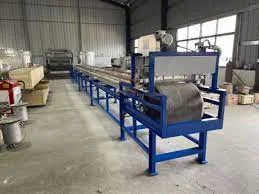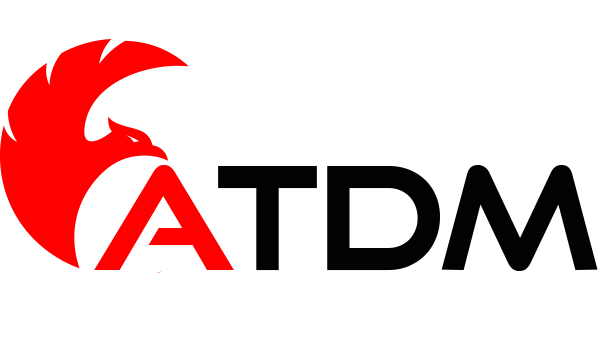
Should your paraffin be polymer free?
Paraffin wax in polymer is a mixture of straight chain hydrocarbons. Most manufacturers are adding plastic polymer resins to their paraffin wax. This hardens the tissue.
Polymers were added to paraffins many years ago in response to insufficient infiltration in open processors, due to xylenes and alcohols absorbing water from the atmosphere. Insufficient infiltration causes “mushy” tissues and plastic polymers harden the block.
Improvements in tissue processors have significantly reduced water contamination in xylenes and alcohols. Most modern processors provide reagent management capabilities to keep reagents pure.
Benefits of medite pure™ paraffin in polymer:
- Tissues cut like butter
- No need to mix paraffin when polymers sink to the bottom
- No white precipitate polymer clumps in your embedding center
- Polymer free paraffin is excellent for both infiltration and embedding
Translucent color makes small biopsies easy to embed
Definition of paraffin wax in polymer : Waxes are organic substances that are solid at room temperature but become free-flowing liquids at slightly higher temperatures.
The chemical composition of waxes is complex, but normal alkanes are always present in high proportion, and molecular weight profiles tend to be wide. The main commercial source of wax is crude petroleum, but not all crude oil refiners produce wax. “Mineral” wax can also be produced from lignite, plants, animals and even insects produce materials sold in commerce as “wax.”
Bees wax in polymer
has been traded for over 2000 years; references to “wax” before the 19th century typically meant beeswax. Yellow beeswax is secret by bees to build honeycombs; the empty comb is melted in boiling water to recover the wax. Yellow beeswax can be bleached with oxidizing agents to white beeswax, a product favored in the cosmetic industry. The composition of beeswax varies widely with geography and the diet of the bees forming the combs, but typical components are C25-C31 hydrocarbons, esters of C30 -C32 alcohols with C16 acids and free C25 – C31 carboxylic acids.
Other Animal bases waxes
include lanolin from the wool of sheep, and ambergris, produce in the intestines of sperm whales. Another example of paraffin wax in polymer is animal waxes that have been trade in the past is spermaceti, derived from the head oil of the sperm whale.
Of course, the endanger status of the whale has stop trading in this product and resulted in the development of synthetic substitutes. One of the most enduring qualities of the wax business has been the ability to improvise and develop substitutes in the face of supply disruptions.
Carnauba wax
is recovered from a variety of palm tree which grows almost exclusively in northeastern Brazil. Carnauba wax forms on the fronds of the trees and is recover by cutting and drying the fronds, then mechanically removing the wax. Impurities are remove from the wax by melting and filtering or centrifuging.
Carnauba wax is distinguish by its hardness and high melt point, combine with an ability to disperse pigments such as carbon black, properties which make carnauba useful in printing inks. It is also use to gel organic solvents and oils as a component of solvent and paste formulations. Carnauba polishes to a high gloss, and is used to polish items such as leather products, candies, metal surfaces, etc.
Candellia wax
is harvest from shrubs grown in the Mexican states of Coahuila and Chihuahua and in Texas. The entire mature plant is uproot and immerse in boiling water acidify with sulfuric acid; the wax floats to the surface for recovery. Principal markets for candelilla wax include cosmetics, food and pharmaceuticals.
Other vegtable based waxes
include Japan wax, paraffin wax in polymer produce on the berries of a small tree native to Japan and China; Ouricury wax, obtain from the fronds of another palm tree growing in Brazil; Rice-bran wax, extract from crude rice bran; and Jojoba, obtain from the seeds of the jojoba plant grown in parts of Costa Rica, Israel, Mexico and the United States.
Other mineral paraffin waxes in polymer
include peat waxes, ozokerite and ceresin waxes. Peat waxes are similar to waxes in that they contain wax, resin and asphalt, but waxes contain 50% more wax in proportion to peat waxes.
Ceresin wax originally was a refine and bleached ozokerite wax, but now is a paraffin wax of very narrow molecular weight distribution. Once again we see the adaptability of the wax business – as supplies of these limited minerals have declined, innovators have developed ways to replace the functionality of natural materials by modifying other waxes; this is a trend that continues today.
Most of the waxes describe so far can be characterized by a higher degree of difficulty required to recover and purify them in significant quantity. Waxes derive from petroleum are much easier to recover, and offer a wide range of physical properties that can often be tailored by refining processes.
FT wax is a paraffin wax in polymer , polyethylene wax produce by the polymerization of carbon monoxide under high pressure; this is the technology used in the emerging natural Gas to Liquid (GTL) projects.
The hydrocarbon product of FT reaction is distilled to separate the mix into fuels products and waxes with melting points ranging from about 45 – 106ºC. Currently FT waxes are commercially produce in large volumes in South Africa and Malaysia, with over 20 k MT consume in the US in ’02. Uses are similar to those for polyethylene waxes including hot-melt adhesives and additives for inks and coatings.
|
Product |
Source |
Melt Pt/Pen 25C |
Main Uses |
|
Beeswax |
Honeycombs |
64c 20dmm |
Cosmetics |
|
Carnuba |
Palm Tree |
84 2 |
Inks, Polishes |
|
Candelilla |
Bush |
70 3 |
Cosmetics, Foods |
|
Ceresin |
Lignite |
65 60 |
Cosmetics |
|
Japan Wax |
Bush |
50 30 |
Candles, Pencils |
|
Montan |
Lignite |
80 10 |
Carbon paper ink |
|
Ouricury |
Palm Tree |
85 2 |
Inks, Polishes |
|
Ozokerite |
Mined East Europe |
68-96 9-15 |
Cosmetics |
|
Petroleum — Paraffin |
Crude Oil |
46-68 10-20 |
Various |
|
Petroleum — microcrystalline |
Crude Oil |
60-93 2-10 |
Various |
|
Polyethylene |
Synthesis |
85-140 3 |
Various |
|
Fischer Tropsch waxes |
Synthesis |
54-72 10-41 |
Various |
Chemically modify waxes: Microcrystalline hydrocarbon and Polyethylene waxes may be modify to meet specific market needs, most often to match performance characteristics of animal or vegetable waxes. In most cases, the first step is air oxidation of the wax with or without catalysts An alternative approach is to react the wax with a carboxylic acid at high temperature.
Oxidized wax can be further modified by saponification or esterification at the carboxyl sites. Oxidized wax is easily emulsify in water through the use of surfactants or simple soaps, and is widely use in many coating and polish applications. Petroleum waxes modified in this way can compete in specific areas with vegetable and insect waxes.
The polymerization process yields highly branched materials with broad molecular weight distributions. Properties of the individual products are highly dependent on the -olefin monomers and polymerization conditions. Melt points range from 54 – 74C.
The unique structure makes these products very effective when used in additive amounts to modify the properties of paraffin wax, primarily for use in candles. The products can increase the hardness and opacity of the paraffin with minimal impact on cloud point or viscosity. Other uses include mold release for polyurethane foams, additives for casting wax, and additive for leather treating.
paraffin wax in polymer is truly a versatile product whose unique properties pave the way for a myriad of end uses. New uses for wax have been found time and again, and the wax market today is as vital as ever.

